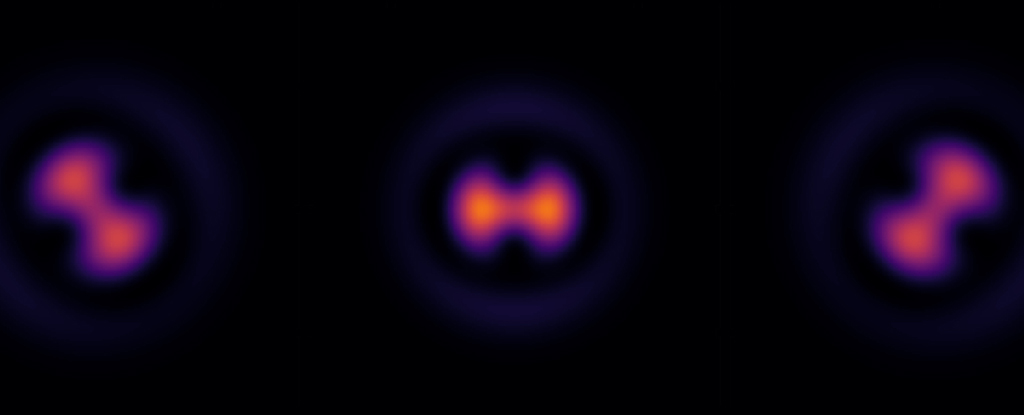For the first time, scientists have measured the positions of individual atoms in 3D space in a single image, opening up a new way of observing quantum interactions in materials.
The new approach, developed by researchers from the University of Bonn in Germany and the University of Bristol in the UK, makes use of a precise quantum gas microscopy setup, trapping atoms of an ultra-cold gas inside cages of light and measuring their characteristics in what’s known as quantum gas microscopy.
While scientists have charted atoms across three spatial dimensions before, current methods require multiple image exposures and lack the high resolution of quantum gas microscopy. Now it can be done much more quickly, with all three dimensions measured in a single snap.
Previous applications of quantum gas microscopy have provided descriptions of atomic arrangements on flat planes, giving researchers X and Y coordinates of pairs of atoms.
By deforming the light given off by the atoms, the researchers have now added a vertical Z position that describes how far ‘up’ an atom sits.
“Instead of the typical round specks, the deformed wavefront produces a dumbbell shape on the camera that rotates around itself,” says quantum physicist Andrea Alberti, from the University of Bonn.
“The direction in which this dumbbell points is dependent on the distance that the light had to travel from the atom to the camera.”
By calculating that distance through some clever math applied to the shape of the ‘dumbell’, the location of the atoms along the Z axis can be measured. This new insight gives researchers sharper tools for quantum experiments where precision and control are required.
“The dumbbell thus acts a bit like the needle on a compass, allowing us to read off the Z coordinate according to its orientation,” says quantum physicist Dieter Meschede from the University of Bonn.
The team is confident that the technique they’ve developed can be improved further in the future, and that it can be adapted to work in different setups beyond quantum gas microscopy.
What’s more, it might be possible to develop new quantum materials with this approach, materials custom-made to order and to achieve specific results. There’s still a lot we don’t know about the Universe at the smallest scales, but this should help.
“For example, we could investigate which quantum mechanical effects occur when atoms are arranged in a certain order,” says quantum physicist Carrie Weidner from the University of Bristol.
“This would allow us to simulate the properties of three-dimensional materials to some extent without having to synthesize them.”
The research has been published in Physical Review A.

Dr. Thomas Hughes is a UK-based scientist and science communicator who makes complex topics accessible to readers. His articles explore breakthroughs in various scientific disciplines, from space exploration to cutting-edge research.








